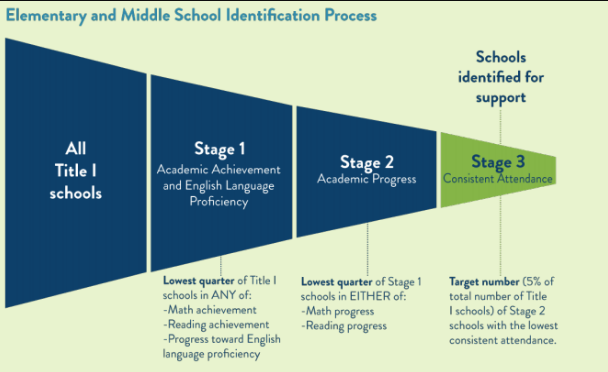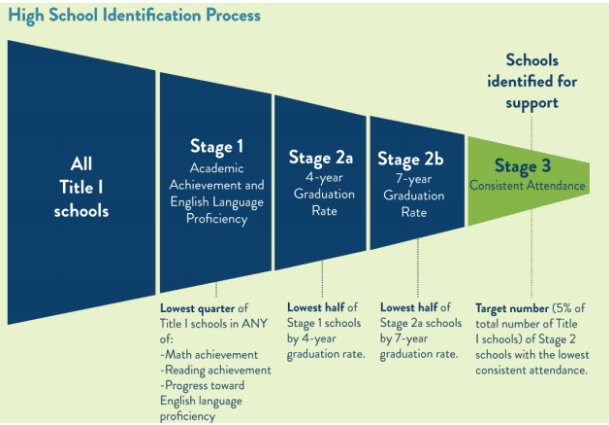Yesterday, the Minnesota House and Senate’s Education Policy Committees held a joint hearing on the state’s Every Student Succeeds Act (ESSA) accountability plan. Even though ESSA does not require that a state’s legislature approve the state accountability plan, it does indicate that it should be developed with “timely and meaningful consultation” of the legislature. Also, there was a provision included in Minnesota’s 2017 legislative session’s Education Omnibus Bill that requires Commissioner Cassellius to submit the plan to the legislature before submitting it to the US Department of Education (USDE).
At the hearing, the Minnesota Department of Education (MDE) provided an overview of the draft plan, which they have developed over the past year in community with a wide variety of stakeholders. According to MDE, they have engaged in over 300 statewide community meetings, and used surveys, Twitter Town Halls, focus groups, and committees.
During the hearing, MDE was commended by testifiers and legislators for engaging a wide variety of stakeholders, focusing on equity, and its efforts to count all students. However, legislators and testifiers also raised some concerns regarding the plan, three of which are summarized below.
Even though Education Evolving has been closely following and reporting on the development of the state plan, details regarding its specific components are beyond the scope of this post. Read here, for information on the plan itself, including the academic and non-academic indicators, the process by which schools will be identified for support, graduation rates, and how growth and proficiency will be calculated.
Concern #1: “Consistent Attendance” AKA Chronic Absenteeism Definition
As we’ve previously written, due to issues surrounding the state’s current data systems, MDE is only able to use chronic absenteeism, or as they’re calling it “Consistent Attendance,” as a measure for their School Quality and Student Success (SQ/SS) indicator. In the future, MDE wants to develop and implement additional SQ/SS measures for “Well-Rounded Education” and “College and Career Readiness.
In their draft ESSA plan, MDE indicated that a student will be considered chronically absent if “their attendance rate is at or below 90% during the days they were enrolled at a school.” In order for a student to be counted, they must have been enrolled for at least half of an academic year.
Madaline Edison, Executive Director for Educators 4 Excellence, indicated her support for MDE including “Consistent Attendance” as a SQ/SS measure because, “There are clear steps that schools can take to remedy this challenge. There are clear research-backed methods to improve attendance that schools can implement.”
However, she recommended that MDE should also advise schools on counting students as present only if they are in the classroom, and not just if they showed up to school. She asserted, “When teachers resort to punitive behavior practices that kick students out of the classroom, such as in-school-suspension, that should not count as a child attending school.”
Concern #2: The Funnel Approach
Rather than use a summative rating for identifying schools, like MDE did under the current Multiple Measurements Rating (MMR) system, MDE has created a funnel approach—one for elementary/middle schools and another for high schools—for identifying the bottom five percent of schools for comprehensive support. For more information regarding the funnel approach, read here.


According to MDE’s Chief Accountability Officer, Stephanie Graff, the funnel approach is a shift from the current system, “in that it is not a summative rating that combines indicators into one overall composite score.” She asserted that the funnel system is a more innovative approach and allows MDE “to very transparently report how every single school and every single student group is doing on every indicator in the accountability system.” She explained that a summative rating, could mask low or high performance on individual indicators.
Andrea Roethke, Managing Director at EdAllies, voiced concern over the funnel approach, arguing that it would decrease transparency for schools, students, and families. Roethke asserted that, “The public only really knows whether a school is identified for support or not. We would like a system that gives some kind of indicator to all schools on where they stand.”
She also discussed some practical concerns with regard to how MDE is using the “Consistent Attendance” measure as a tiebreaker. She explained that the funnel prioritizes the academic indicators by putting them first, but that the ultimate decision about which schools receive comprehensive support is decided by “Consistent Attendance,” which is a non-academic measure. Therefore, a school’s performance on the academic indicators, would not be taken into account in the final decision of whether or not they going to receive comprehensive support.
Concern #3: Non-Proficient Labeling and 95 Percent Assessment Participation Rate
ESSA requires that at least 95 percent of students in a school take the statewide, standardized assessment, and that the state’s plan include a “clear and understandable explanation” of how they will factor this requirement into the statewide accountability plan.
According to Graff, MDE is “going to take a pretty strong stance on this one,” meaning that any student who does not participate in the assessment will be counted as not proficient. According to Graff, “This emphasizes the value of taking the assessments.”
An eighth grade student provided testimony against this component of the plan, stating that “MCA student failure labeling” is wrong. She explained that she had opted out of the MCAs for three years, and that the tests “Do not show my knowledge and are not an accurate way of determining if I deserve a label as a non-proficient student.”
A parent also testified against this provision, indicating that it would be unfair to count students as non-proficienct if their parents decide to opt them out of the standardized assessments, since it is their legal right to do so.
What’s Next for Minnesota’s ESSA Plan?
MDE has to submit the state accountability plan to USDE on September 18, 2017, but they will make the draft plan available for public comment on August 1, 2017. Additionally, at least 30 days before submitting the plan, MDE must do the following:
- Submit the plan to Governor Dayton for his signature. However, if Governor Dayton has not signed the plan within 30 days of delivery, MDE can submit the plan to USDE without a signature.
- Submit the plan to legislature’s education policy and finance committees. Even though this is required by the state’s 2017 Education Omnibus Bill, it is more of a courtesy as the committees do not need to approve the plan in order for MDE to submit it to USDE.
MDE will also hold public meetings throughout the state from August 15-26, and the hold another joint hearing on ESSA sometime in August.
Education Evolving will continue to follow and report on the development of Minnesota’s ESSA state accountability plan.
Found this useful? Sign up to receive Education Evolving blog posts by email.